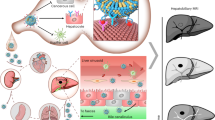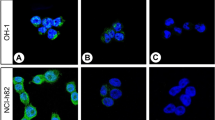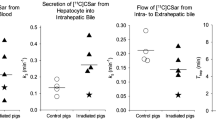Abstract
USING an immunofluorescent method, Cohen and his colleagues1 reported that hepatomas induced in rats by p-dimethylaminoazobenzene could take up plasma proteins without prior extracellular hydrolysis. Later we showed2 that intact plasma proteins could similarly be demonstrated within the cells of benzpyrene-induced primary fibrosarcomas in rats, and several other transplanted mouse tumours, both in solid and in ascites forms. However, the question whether this capacity of taking up intact protein molecules is associated with malignancy or is a property of all rapidly growing tissues remained unanswered. The present investigation was designed to study the uptake of intact protein molecules in a rapidly growing tissue in vivo, namely in regenerating rat liver cells after partial hepatectomy.
This is a preview of subscription content, access via your institution
Access options
Subscribe to this journal
Receive 51 print issues and online access
$199.00 per year
only $3.90 per issue
Buy this article
- Purchase on Springer Link
- Instant access to full article PDF
Prices may be subject to local taxes which are calculated during checkout
Similar content being viewed by others
References
Cohen, S., Beiser, S. M., and Hsu, K. C., Cancer Res., 21, 1510 (1961).
Ghose, T., Nairn, R. C., and Fothergill, J. E., Nature, 196, 1108 (1962).
Nairn, R. C., Chadwick, C. S., and McEntegart, M. G., J. Path. Bact., 76, 143 (1958).
Author information
Authors and Affiliations
Rights and permissions
About this article
Cite this article
GHOSE, T., TSO, S. Uptake of Protein by Regenerating Liver Cells. Nature 204, 1210–1211 (1964). https://doi.org/10.1038/2041210a0
Published:
Issue Date:
DOI: https://doi.org/10.1038/2041210a0
Comments
By submitting a comment you agree to abide by our Terms and Community Guidelines. If you find something abusive or that does not comply with our terms or guidelines please flag it as inappropriate.



